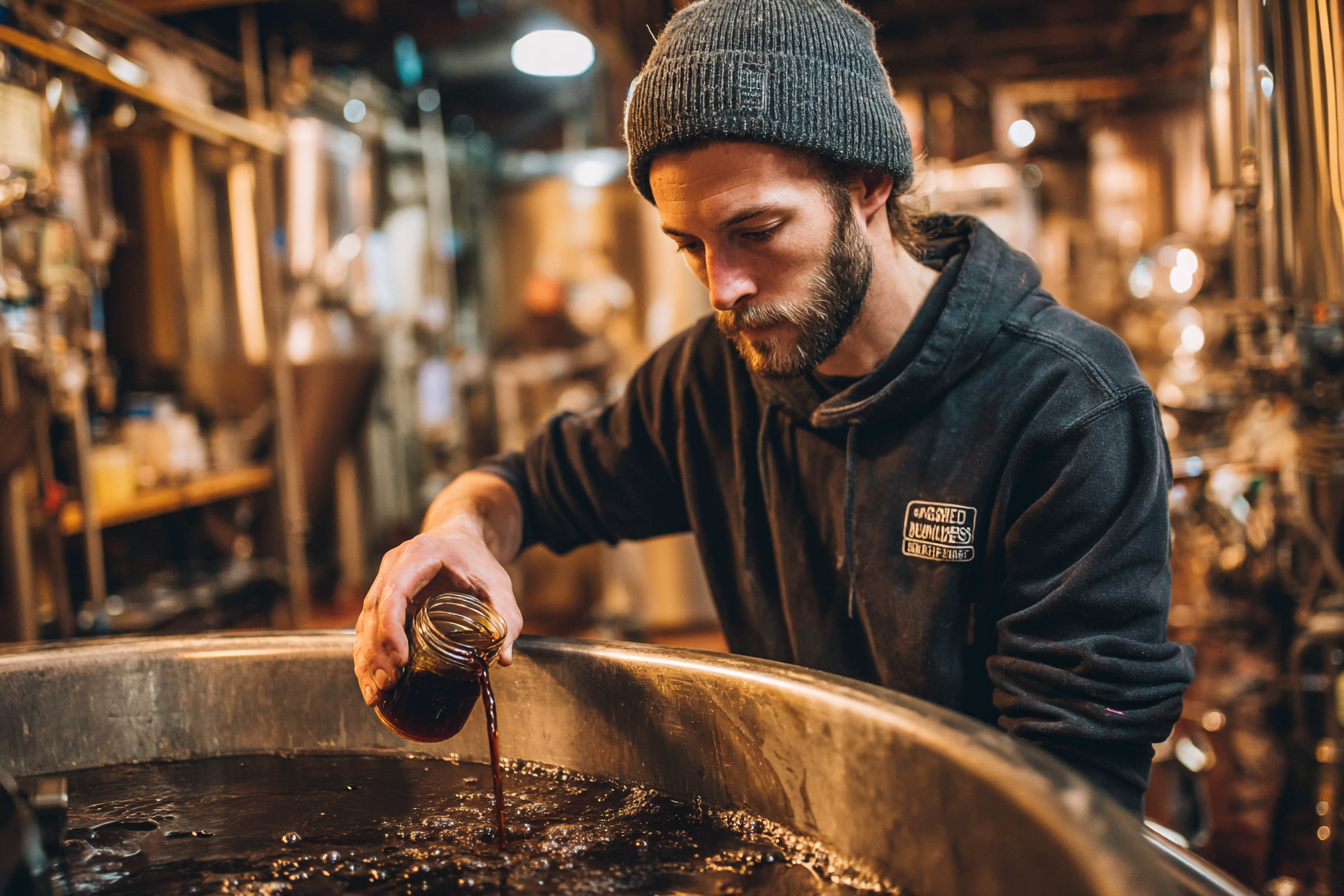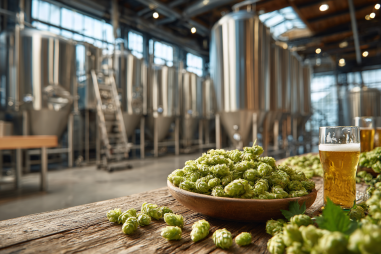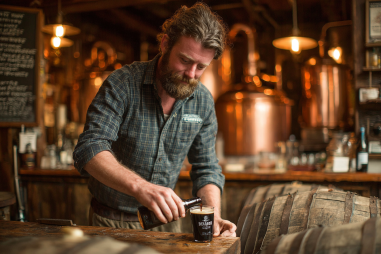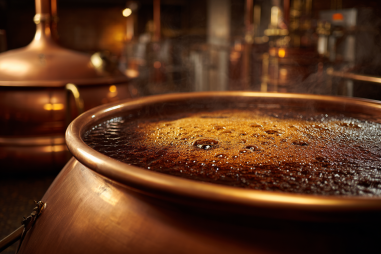Brewing an American Brown Ale is a rewarding experience that blends creativity with precise brewing techniques. This style is cherished for its rich malt character balanced by moderate hop bitterness and earthy nuances. Whether you’re a homebrewer just starting out or an aspiring professional, understanding the step-by-step brewing process will help you perfect this flavorful beer. Let’s dive into the detailed process from ingredient selection to packaging, covering key tips and common pitfalls along the way.
Overview of American Brown Ale Style Guidelines
American Brown Ale is known for its medium-bodied malt-forward profile with a gentle hop presence. The beer typically features deep amber to brown hues and a smooth drinking character. According to style guides, it generally falls in the range of 4.5% to 6.2% ABV, with moderate bitterness usually between 20 to 40 IBUs. The malt flavors showcase caramel, chocolate, and toasty notes, while hops contribute pine, citrus, and floral aromas that complement the malt without overpowering it. This balance of malt and hops gives the beer its inviting, approachable complexity that appeals to a wide range of palates.
Ingredients Selection: Malts, Hops, Yeast
Identifying the right ingredients sets the foundation for a great American Brown Ale. Let’s break down each component:
- Malts: The malt bill usually features a base of pale malt or two-row malt to provide fermentable sugars and a clean backbone. Specialty malts like caramel/crystal malts (ranging from medium to dark), chocolate malt, and sometimes a touch of black patent malt contribute to depth, complexity, and the characteristic amber-brown color. Caramel malts offer sweetness and body, while chocolate and black malts add roasted, nutty, and cocoa notes.
- Hops: American Brown Ales use American hop varieties to add aroma and a moderate bitterness that balances the sweet malts. Popular choices include Cascade, Centennial, or Amarillo, lending citrusy, piney, and floral notes. Hops are added thoughtfully to enhance rather than dominate flavor.
- Yeast: An American ale yeast strain is preferred for its clean fermentation profile and ability to highlight malt flavors. This yeast strain typically ferments well at moderate temperatures and results in a smooth finish without excessive esters or phenols.
Mashing and Wort Preparation Techniques
The mashing process is where starches in the malted grain convert into fermentable sugars. For an American Brown Ale, a single infusion mash between 148°F to 156°F is common, with the exact temperature chosen based on the desired body and mouthfeel. A lower mash temperature (~148°F) will produce a drier, lighter body, while a higher temp (~156°F) yields more residual sweetness and fullness.
Begin by milling your grains carefully to expose the starches while avoiding excessive pulverization that can lead to stuck mashes. Next, mix the crushed grains with hot water to create the mash. Hold this temperature for about 60 minutes, allowing enzymes to break down starch into sugars. A mash out step at around 170°F can help stabilize the mash before lautering.
After mashing, drain the wort from the grain bed and sparge with hot water to collect the sugary liquid that will become beer. Wort clarity and gravity measurements at this stage can guide adjustments in the process and efficiency expectations.
Boiling and Hop Addition Schedules
Boiling the wort serves multiple purposes: sterilizing the liquid, halting enzymatic activity, and enabling hop additions to impart flavor and bitterness. A standard boil lasts 60 minutes, with hops added at strategic times:
- 60 minutes: Base bittering hops to build the backbone bitterness, usually contributing the majority of IBUs.
- 15-20 minutes: Additional hops can smooth bitterness and start aroma extraction.
- 5 minutes or less: Late hop additions infuse fresh hop aroma and flavor without much bitterness.
Some brewers prefer to add hops during whirlpool or after boil for enhanced aroma. Whichever method you choose, ensure your hop schedule complements the malt’s sweetness without overwhelming it. Also, be mindful to avoid excessive hop additions that clash with the smooth, caramel-rich profile of the style.
Fermentation Specifics for American Brown Ale
Once boiling and hop additions are complete, quickly cool your wort to fermentation temperature, ideally between 65°F and 70°F. Pitch your chosen American ale yeast to start fermentation. Maintaining a consistent temperature in this range encourages a clean fermentation without unwanted ester or phenolic flavors, supporting the delicate balance characteristic to American Brown Ales.
Fermentation usually takes 7-14 days. Active fermentation begins within 24-48 hours, with bubbling in the airlock as an indicator. Monitoring gravity readings helps determine when fermentation is complete. Once stable, the beer can be transferred off the yeast cake to avoid off-flavors from autolysis.
Conditioning and Packaging
Conditioning allows flavors to meld, mature, and any harsh notes to soften. American Brown Ales benefit from a cold conditioning phase (lagering) for 2-4 weeks at temperatures near 35–45°F. This step smooths the profile and clarifies the beer.
Packaging can be done via bottles, cans, or kegs. When bottling, add priming sugar carefully to enable natural carbonation while avoiding over-carbonation. Proper sanitation during packaging minimizes contamination risk, preserving beer quality.
Tips for Optimizing Brew Quality
- Water Chemistry: Adjust water sulfate-to-chloride ratios to emphasize malt sweetness (more chloride) or hop bitterness (more sulfate), aiming for balanced flavor.
- Fresh Ingredients: Use fresh malts and hops for maximum aroma and flavor impact.
- Accurate Temperature Control: Maintain consistent mash and fermentation temperatures to avoid off-flavors.
- Sanitation: Meticulously clean all equipment to prevent contamination and off-flavors.
- Batch Notes: Keep detailed records to replicate successes or adjust future brews based on past experiences.
Common Challenges and Solutions
Brewing American Brown Ale isn’t without potential hurdles. Here are some issues brewers often face and how to tackle them:
- Stuck Mash: Occurs when wort doesn’t drain well. Remedy by checking grain crush consistency, avoiding too fine milling, or adjusting mash thickness.
- Off-Flavors: Could be caused by fermentation temperature swings or contamination. Maintain steady temps and sanitation rigorously.
- Overly Bitter Beer: Scale back hop additions slightly or shorten boil times for hops to soften bitterness.
- Underwhelming Flavor: Consider adding specialty malts in small increments in future brews or dry hopping lightly for added aroma.
By understanding each stage of the American Brown Ale brewing process and applying practical techniques, you can craft a complex, rewarding ale that highlights the best of malt and hop harmony. Happy brewing!







